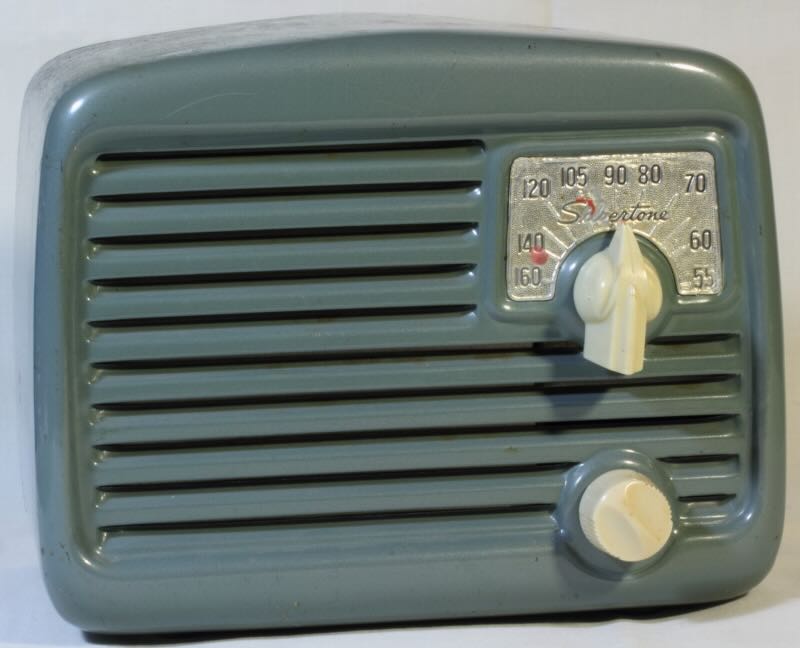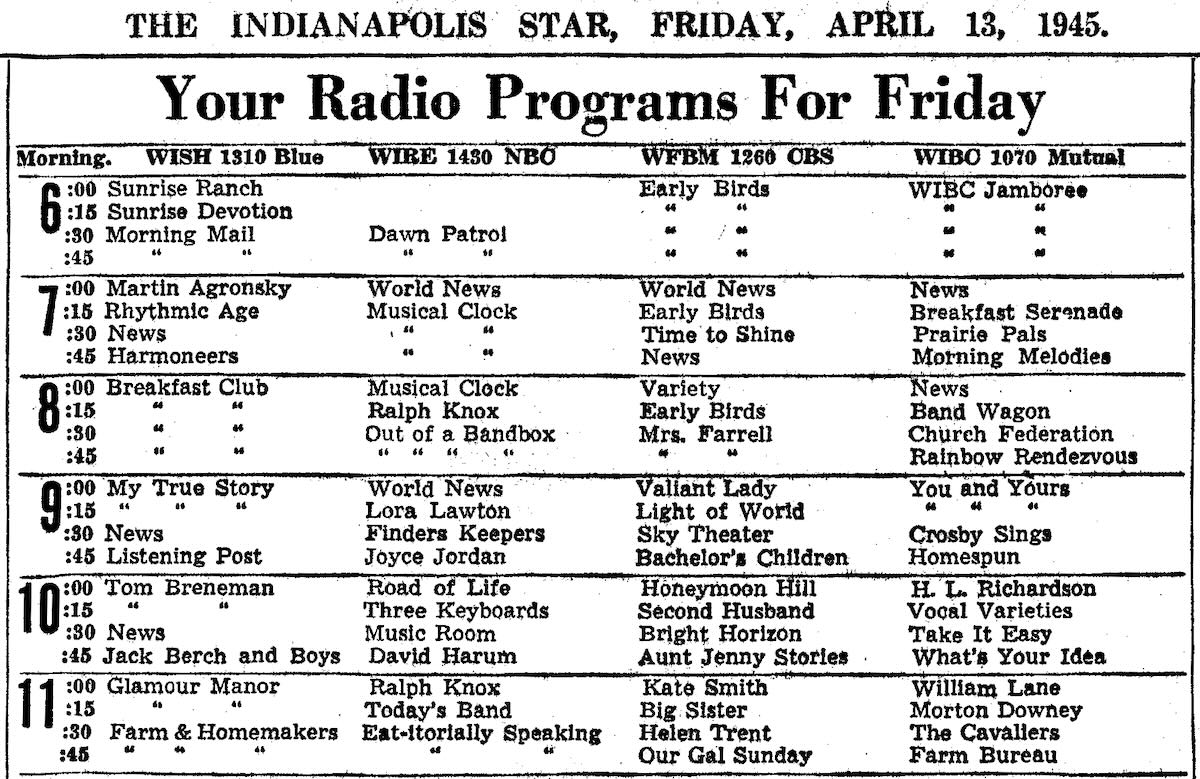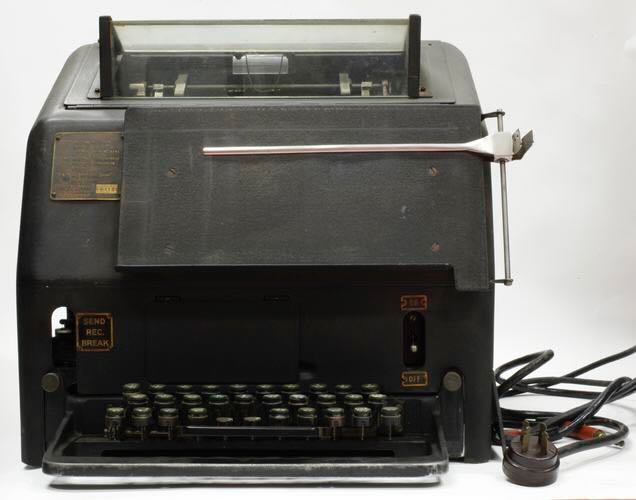Many thanks to SWLing Post contributor, Bob Colegrove, who shares the following guest post:
My Very First Radio
Sears and Roebuck Co., Silvertone, Catalog No. 8003, Model No. 132.818-1
I don’t remember much from 1949. I was seven years old and still in the first grade. I do remember being gifted a radio by my mom and dad on my birthday. It was a Sears and Roebuck Co., Silvertone, Catalog No. 8003, Model No. 132.818-1. I don’t really remember asking for it. I’m sure mom and dad did not have a clue as to how consumed I would become with radio over my lifetime. In truth, this was not the radio that got me totally absorbed, rather that function would be filled in 1958 by the Howard Radio Co. Model 308 combination MW/SW radio-phonograph console which had been relegated to the basement in favor of the TV set.
In 1949 television was on the cusp of success, and AM radio was still the one-way Internet of its time. I recall my mother listening to countless soap operas during the afternoon. The Howard was still in the living room and we listened to all the popular programs at night. Anyway, the Silvertone was mine. It took up residence in my room and I could independently explore the wonder of five local stations broadcasting in Indianapolis at that time. There were no parental guidance settings on the Silvertone, nor was there any need.
The Silvertone was not a world-class radio with all the sensitivity, bells and whistles I would later desire. Below WXLW, 950 kc it was deaf. It was, in fact, one tube short of an “All American Five.” However, one of its four tubes was dual function, if you counted the detector. It was what was called an “ac-dc” radio. This meant it could be powered by either 110 Vac or Vdc. Granted, there were a couple communities in the US which were still serviced by dc power at this late date, but that fact certainly did not warrant advertising. The whole thing always seemed to me no more than a marketing ploy on the part of manufacturers to cover for the lack of an expensive isolation transformer in the circuit. Given the fact that electrical standards of the time did not provide for polarized outlets and power cords, these things could be quite hot, and it’s amazing so many tinkers, myself included, are around to talk about it.
One Tube Short of an “All American Five”
The dial was very crude, and the tiny tuning knob swept all 107 available channels in a 180-degree twist of the variable condenser. My mom, always handy with a paint brush, took to marking favorite stations with a dab of nail polish. 1430 kc was WIRE and 1070 kc was WIBC. Perhaps she got the idea from Bill Halligan who used little red dots on the controls to indicate the setting that would likely produce some noise.
The printed media were sizeable and substantive in the 1940s. The Indianapolis Star’s morning edition for Friday, April 13, 1945 was particularly mournful as the U.S. woke up to the news that the president had died the day before. I was later given to understand that many stations broke from the normal schedule for a few days to play somber music. Notwithstanding, the first section still bore the quintessential hourly radio program schedule from 6 am to midnight for each of the four local stations. We always kept clippings of station logs for each day of the week.
My interest in baseball grew over the next couple years, and the Silvertone played an important role in my keeping up with the local AAA team. The static on a summer night was atrocious. Further, in those days, the broadcasters were not compelled to fill the air with chatter between pitches. There were no recitations of mindless statistics and no color commentators to describe the nuances of sliders and curve balls. Consequently, between pitches there were often long pauses of nothing but dead air. If you happened to tune in during a pause you had little idea where WISH, 1310 kc was on a hopelessly crude dial.
Most minor league broadcasters did not travel with the team. When the team went on the road, they used an old Model 15 clickety-clack Teletype machine in the studio. A local guy at the distant ballpark would observe a pitch or play, and quickly type a cryptic message on his Teletype. On the radio you would first hear the receiving Teletype spring to life in the studio as the message came in. The announcer would quickly interpret it, and then embellish the play with some excitement as best he could.
Teletype Model 15
Copyright Museums Victoria (Licensed as Attribution 4.0 International
https://creativecommons.org/licenses/by/4.0/)
During those times, it was not too uncommon for the Teletype to suddenly go down during the game. What to do? An announcer was suddenly left to his own creativity to fill in airtime. Possible solutions were to describe the lengthy process of extricating a stray animal from the field, or a sudden cloudburst and consequential rain delay. An intrepid announcer went on as nothing happened, making up the play-by-play over the interval. Invariably, when the Teletype came back up, he found himself not quite in sync with the game and possibly a few runs behind. At that point the challenge was to patch in the necessary play and go on to complete the game to the satisfaction of an otherwise unsuspecting audience.
Well, after 73 years, I’ve seen my share of radios. In the meantime, the Internet has made it possible to DX the entire world at any time on a fifty-dollar Kindle – excellent fidelity, no interference, no noise, no fading. But, after all these years, I still cherish those static-filled ballgames and teletype machines heard on the Silvertone a long time ago.
Quietly Waiting for the Next Pitch





